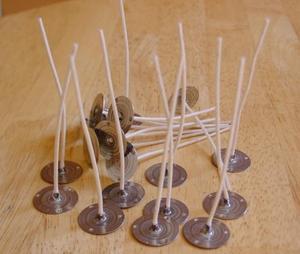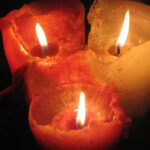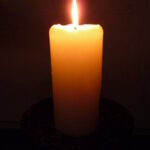A vital contributor to candle-making is the wicking. There are many different types and sizes available for every kind of candle. Choosing the right wick for your project can be tedious, but not if you have all the information.
Flat-braid cotton wicks are perfect for pillar candles but should not be used with gel candles, since the wicking will have no support and will simply drown itself in the melted wax. 30 ply wicking should be used with 3.5 to 4 inch diameter pillars, 24 ply for 2.5 to 3 inch diameter pillars, and 18 ply for 1 to 2 inch diameter pillars.
Used often with beeswax candles, square braid wicks curl and bend at the end during burning, which prevents mushrooming (carbon buildup) at the end of the wick. The reason this type of wick is popular with candle-makers using beeswax is because the melted beeswax gets drawn up through the wick for better burning. #1 should be used for 1-2 inch diameter pillars, #2 is for 2-3 inch diameter pillars, and #3 is used with 3.5-4 inch diameter pillars.
Cored wicks have either zinc, cotton, paper, or tin within the center of the standard braid. This keeps the wick standing straight instead of drowning itself in the melted wax. Because of this benefit, cored wicks are maybe the most popular. Sizes and applications are as follows:
36-24-24 – for use with small container or votive candles
44-24-18 – for use with votives and 2-3.5 inch diameter container candles
51-32-18 – for use with 3-4 inch diameter container candles
60-44-18 – for use with 4-5 inch diameter container candles
Because different wicks produce different heights and strengths of flame, it is a good idea to test different wicks and see which ones work best for you. Because wicking is so inexpensive, it’s easy to experiment with different wicks.
If you find that the candle is smoking, the wick is probably too large. When the wick is too large, it burns the wax too quickly, which results in soot. If a candle burns down the middle, leaving much of the outer edges of the wax un-melted, this means that the wick is too small. This generally results in the wick drowning itself in melted wax.
It is worth noting that if you are planning to make a candle that is large in diameter, you may want to consider using more than one wick. Otherwise, you may find that even the larger wicks simply do not produce enough flame and heat to melt the outside edges of the candle. Unless you are creating an oval candle, your best bet is to go with three wicks.





